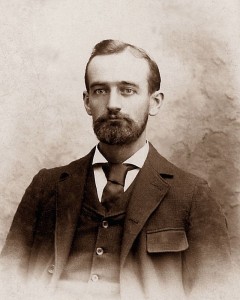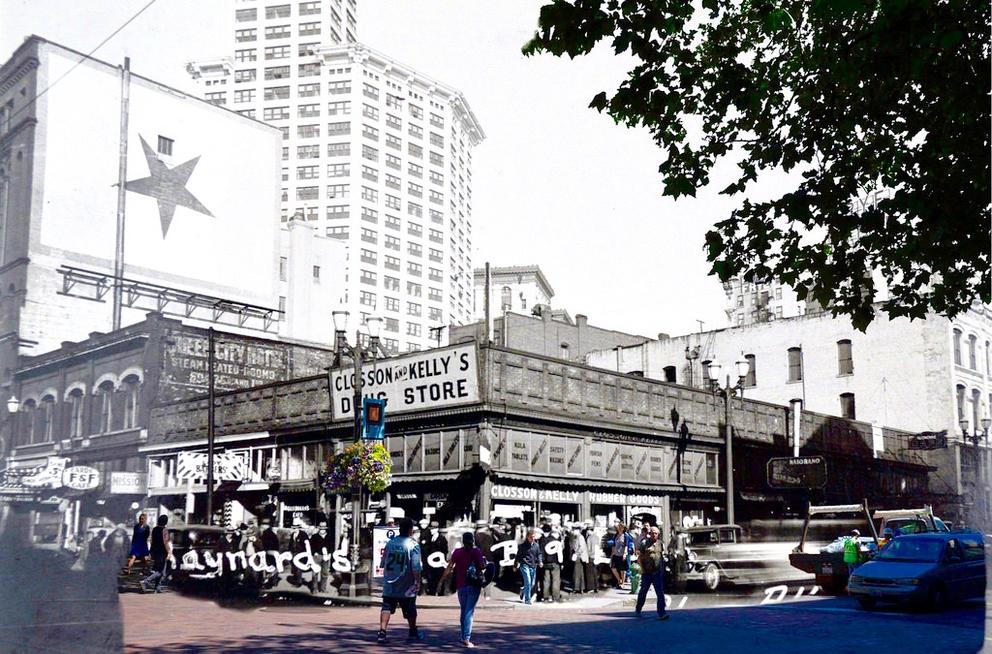America is the land of opportunity for all, immigrant or native born. Work hard, get a little lucky, and even a simple barber can lay the foundation for a real-estate empire that spawns a presidential candidate.
The exact spot to look for opportunity has moved around: In the early 1890s it was in Seattle. The rebirth of the city after 1889’s Great Fire called to people of all types in an urban version of “Go west, young man.” It doubled Seattle’s population in two years, adding 25,000 people.
Donald Trump’s grandfather Frederick Trump (née Frederich Drumpf, of #makedonalddrumpfagain fame) was drawn into Seattle like a moth after the fire. His time here has generated some recent controversy, with a number of stories seeking to paint him as a bit of an exploiter or worse.
As someone who documents and studies local history, I’ve scoured the available sources about Frederick Trump’s time here. I just don’t see the evidence to make Frederick out as a kind of anything-for-a-buck business person whose background somehow presages the less-appealing aspects of the dealings of his grandson, the would-be president.
Frederick Trump was cutting hair in New York, living with extended family when the Seattle fire made the news nationwide. He read about it perhaps in the New York Times or maybe in the New Yorker Staats-Zeitung in his native German. Trump was just 20, prime age for the beckoning of opportunity.

A few days after the fire, the Times reprinted a quote of Seattle city leader H. H. Dearborn, “The fire will prove a blessing in disguise.” The follow-up a year later put the reconstruction in numbers: 465 buildings; 69,425,000 bricks; 60 wharves; and $10,000,000 of construction. “Seattle is a far handsomer and better city to live in than the old Seattle was,” the Times reported.
Trump came to Seattle a year later, toward the end of 1891. He was listed in city directories and a few Seattle Post-Intelligencer advertisements, so we know what he was doing. He switched from cutting hair to serving meals, operating a restaurant called The Dairy. It was just east of the northeast corner of Occidental and Washington, which is in today’s Pioneer Square, and Trump lived in a hotel called Pacific House at the northwest corner of that intersection.
He arrived to a divided city, a fact that provides some complications for trying to understand Trump’s time in Seattle. On the one hand there was no shortage of saloons, fight venues, gambling houses, or brothels. On the other hand, a coalition of progressives and moralists fought to clean up the city. While Trump was in Seattle, district attorney James T. Ronald was elected mayor.
Ronald fired the police chief on his first day in office and made sure state anti-gambling laws were enforced for the first time. Even Pioneer Square, now remembered simply as a hive of villainy, had a split personality. Used goods stores, pawnshops, outfitters and other upstanding merchants were shoulder to shoulder with the more unsavory venues.
Trump’s restaurant had good neighbors. He shared a building with several other restaurants and a handful of pawnbrokers. In a twist of fate that would make John Oliver smile, two doors over from Drumpf was a jeweler named Rumpf. Rumpf partnered with Joseph Mayer, who went on to build the street clocks that Seattle was once noted for.
In 1891 the atmosphere was quite a bit different across the street where Trump lived. Downstairs from Pacific House were two saloons. The clink of poker chips drifted out on cigar smoke from one of them, and from the basement. These were two of Seattle’s five unofficially sanctioned gambling houses. (On weekends that's now the downstairs dance floor of country bar Box House, and the area at the top of the stairs.)
We don't know much about Trump’s restaurant. His predecessor Spiro Bisazza ran an ad for it in 1890 as the Poodle Dog, touting a new establishment with long hours, quality ingredients, meals for prince or pauper, and accommodations for women and families away from the predominately male clientele. It's probably safe to assume Trump operated under the same principles.
Gwenda Blair, in The Trumps, her triple biography of Donald Trump, his father, and his grandfather, quoted an article that described the contents of the restaurant. It had "one cash register, one range, one iron safe, one counter, twenty-four stools, twenty four chairs, and a cupboard full of silverware and dishes." There must have been a long counter and six or so tables, too.
Trump ran ads at the start of 1892 looking for a business partner, and then at the end of 1892 looking for a buyer so he could "head east." In early 1893 Trump packed up for Monte Cristo, a silver mining town not as far east as we might have expected, though it was in eastern Snohomish County. After a few years he came back to Seattle and ran another restaurant briefly before joining the Klondike gold rush in the spring of 1898. There he ran a hotel in Bennett, Yukon Territory.
In passages that aren’t clearly documented regarding the activities of Trump himself, Blair set off much of the current speculation about Frederick. She pointed out the unsavory aspects of Seattle and the two mining towns and supposed that Trump held connection to the glut, debauchery, and deviltry around him. It's led to ridiculous, well-shared, and oft-liked articles claiming that he ran a brothel, was a pimp, and dealt drugs. In truth, there is no evidence, as I’ve documented at considerable length on my personal blog, that he did more than serve meals to everyone who walked by his door in Seattle. He did not even have a license to sell alcohol.
Clearly though, he found a way through hard work to pocket healthy profits from those risking their lives around him. But making money from loggers, coal miners and gold prospectors was such a common profession that we have a term for it: “mining the miners.” In fact, Trump’s restaurants and hotels were neither unique nor among the notable successes of the Klondike businessmen. Seattle Mayor William D. Wood, a California native, famously went AWOL to create a freight steam line from San Francisco and Seattle to Alaska. Alexander Pantages, a Greek immigrant, went from manager of a Skagway theater in Alaska to owner of a Seattle theater to “the king of vaudeville” with a 70 theater circuit across the West.
Rather than making fun of Donald Trump at Seattle's expense, his opponents would be better served by focusing on the many reasons why he should not be president. The distraction is unfortunate, because if you cut through the euphemisms about Frederick’s supposed activities, there is an even better Seattle story in Blair's biography.
Frederick Trump became a naturalized U.S. citizen in Seattle. He did it 12 short days before the 1892 presidential election, just in time to cast his vote. In 2016 with four months to go, there are reports that Donald Trump has inspired masses of immigrants to apply for citizenship so that they too can vote in this election too. But, by most accounts, they're doing it to make sure that he loses.



